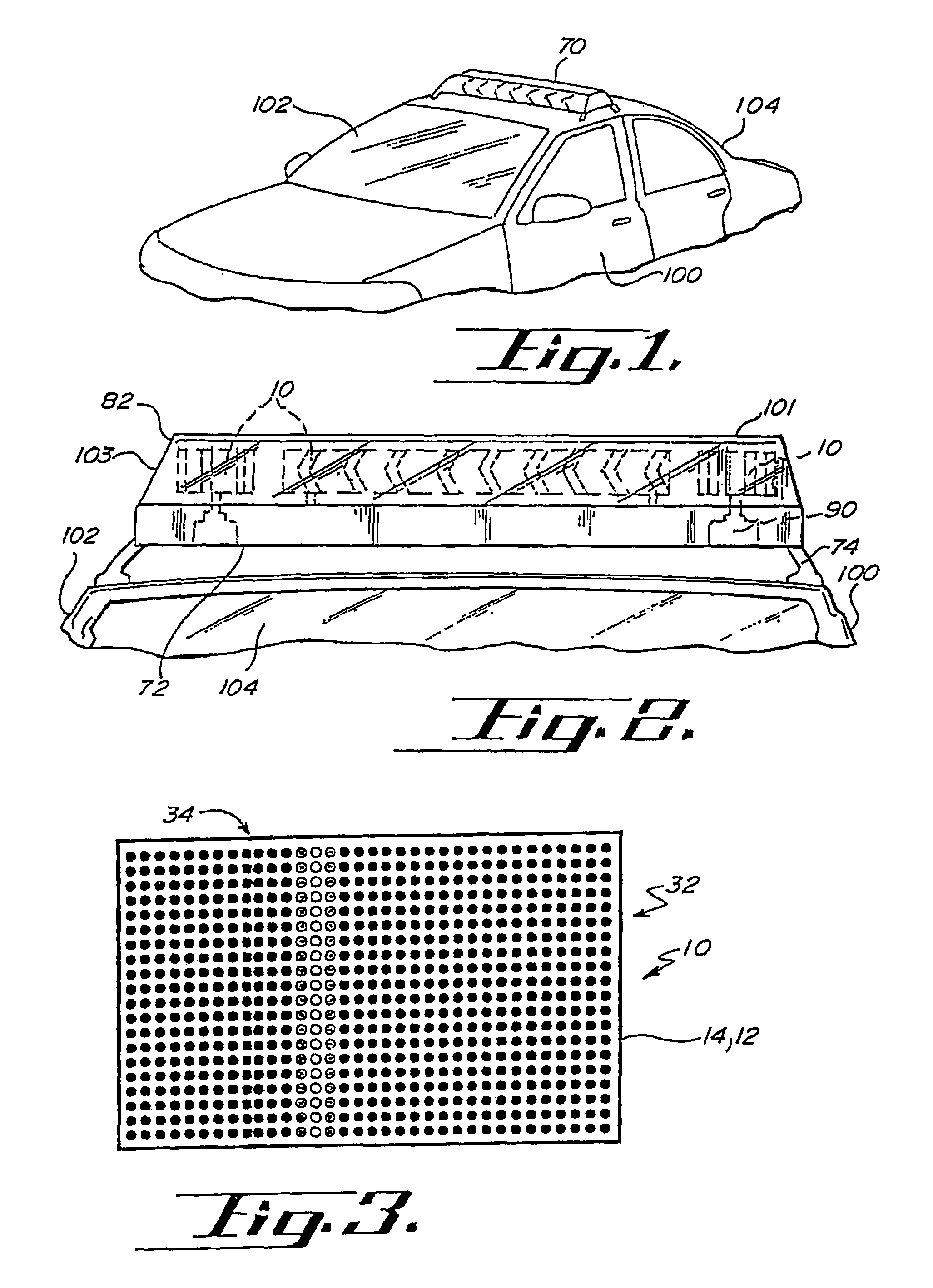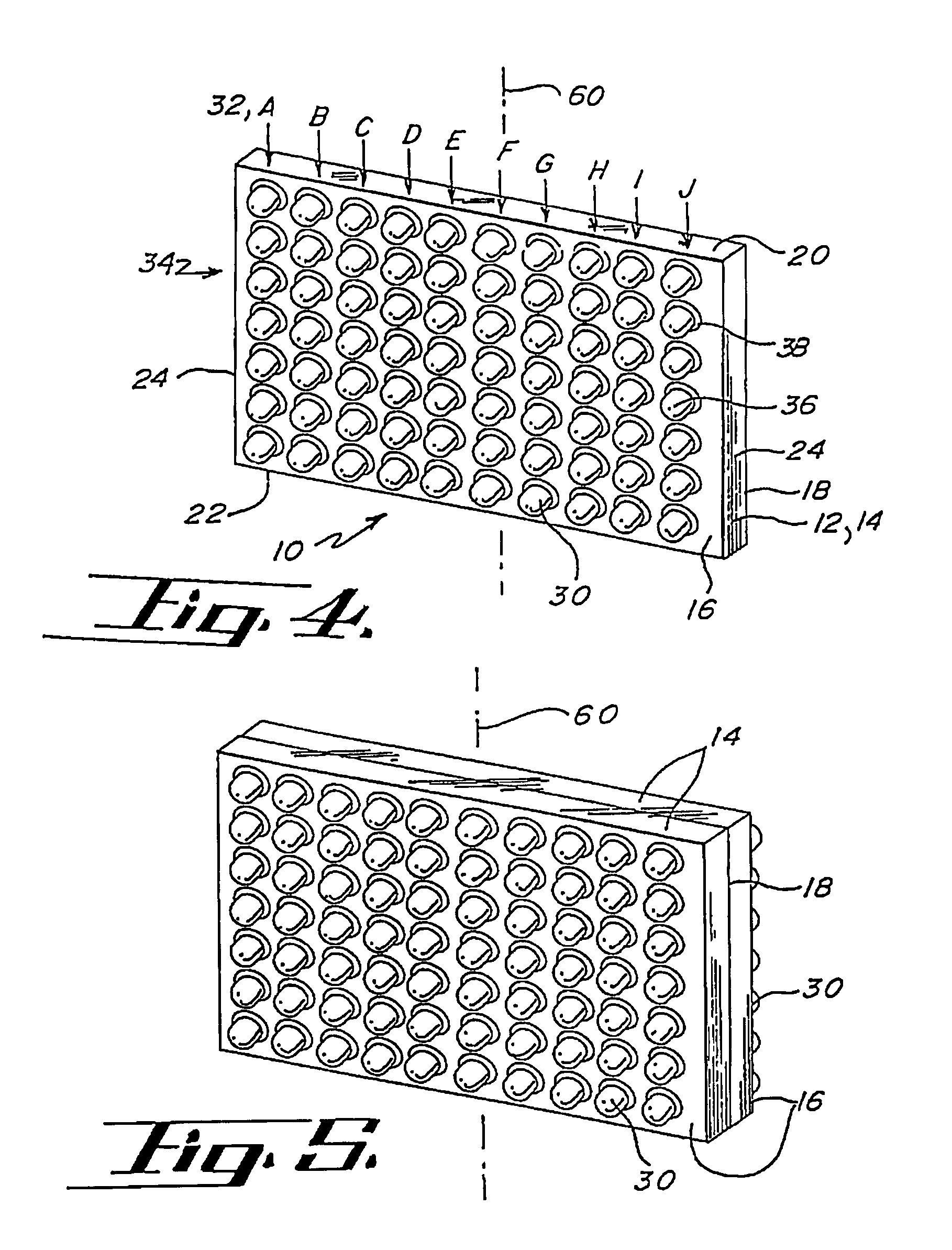LED compensation circuit
a compensation circuit and led technology, applied in the direction of electric variable regulation, process and machine control, instruments, etc., can solve the problems of reducing the service life of the circuit, increasing the size of the light bar, adversely affecting the aerodynamic characteristics of the vehicle, etc., to achieve convenient customization by the user, improve the effect of performance, and prolong the life cycl
- Summary
- Abstract
- Description
- Claims
- Application Information
AI Technical Summary
Benefits of technology
Problems solved by technology
Method used
Image
Examples
Embodiment Construction
[0083] A warning signal light according to the principles of the invention is indicated generally herein as numeral 10. FIGS. 1 and 2 depict light bar 70 mounted to an emergency vehicle 104. Light bar 70 includes base 72, mounting means 74, cover 82, and warning signal lights 10. Also included in light bar 70 may be gyrators 90 used to impart motion to warning signal lights 10.
[0084] Referring to FIG. 4, warning signal light 10 comprises light support 12, light sources 30, controller 50 (shown in FIG. 6), and connecting portion 40 for attaching the warning signal light 10 to light bar 70 or gyrator 90. The warning signal light 10 operates to create a warning signal for use by an emergency vehicle 104 by selectively activating light sources 30 using controller 50. Alternatively, warning signal light 10 may be formed of a solitary LED light source 30.
[0085] Light sources 30 are preferably light emitting diodes (LED's) and are generally arranged in modules formed of groups of LED's a...
PUM
 Login to View More
Login to View More Abstract
Description
Claims
Application Information
 Login to View More
Login to View More - R&D
- Intellectual Property
- Life Sciences
- Materials
- Tech Scout
- Unparalleled Data Quality
- Higher Quality Content
- 60% Fewer Hallucinations
Browse by: Latest US Patents, China's latest patents, Technical Efficacy Thesaurus, Application Domain, Technology Topic, Popular Technical Reports.
© 2025 PatSnap. All rights reserved.Legal|Privacy policy|Modern Slavery Act Transparency Statement|Sitemap|About US| Contact US: help@patsnap.com



